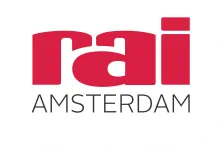- Article 1 - General legal framework
- Article 2 - Flying at the RAI Amsterdam site
- Article 3 - Flying in the halls or other spaces at RAI Amsterdam
Article 1 - General legal framework
In the Netherlands flying a light, unmanned aircraft, also called UAS (unmanned aircraft system) or RPAS (remotely piloted aircraft system), for professional purposes is governed by law.
Flying drones for commercial use means using them (or any other unmanned aircraft) for business purposes, usually involving a financial remuneration. For example, companies that use drones commercially are video production companies that create aerial films during festivals and inspection companies that use drones to study locations which are difficult to access.
Flying drones for commercial use is only permitted if the company has an exemption. Such an exemption can be obtained by submitting an application to the Human Environment and Transport Inspectorate (ILT or ILenT).
The exemption is subject to regulations and restrictions, such as:
- proof of registration of the UAS;
- proof of airworthiness of the UAS;
- UAS insurance;
- pilot licence;
- safety management system for the organisation/owner of the UAS;
- temporary exceptional usage permission for the area in which the drone is going to take off and land.
You should be aware of the fact that insurance companies will probably only provide cover for legitimate flights.
A drone must always be flown in a two-man formation (pilot and cameraman or supervisor). The second person does not need to have the necessary practical experience and aviation knowledge.
The exemption for a Remotely Piloted Aircraft Systems (RPAS) concerns the so-called 'combined exemption' for:
- the ban on using the space;
- the ban on using an aircraft without having a valid pilot's licence;
- The ban on using an aircraft without a valid proof of airworthiness and noise certificate.
The above-mentioned exemption can be obtained by submitting an application to the Human Environment and Transport Inspectorate. The Inspectorate applies rules for a safe, orderly and smooth processing of air traffic and rules to protect public space when the air space is used by a drone. The Inspectorate supervises compliance with these laws and rules and also enforces them.
More information about the procedure, requirements and costs for applying for an exemption can be found in the Light Unmanned Aircraft Information Bulletin (Dutch - Informatiebulletin lichte onbemande luchtvaartuigen).
If you want to take aerial photos or make aerial films above the territory of the Netherlands, you NO LONGER require an aerial photography permit from the Ministry of Defence (since June 2013).
Article 2 - Flying at the RAI Amsterdam site
The entire outdoor site of RAI Amsterdam lies inside the protection zone of Schiphol airport. The areas in which drones are not allowed to fly are indicated on the map.
In this area, the ILenT will not grant permission in accordance with the above legislation and regulations.
This applies both to commercial and private drones.
Article 3 - Flying in the halls or other spaces at RAI Amsterdam
The following rules apply to flying a drone in one of the spaces of RAI Amsterdam:
- flying a drone at RAI Amsterdam is regarded as flying for commercial purposes;
- the drone may only be used after approval by RAI Amsterdam and by the organisation of the event;
- no people are allowed in the hall, apart from the pilot, cameraman and a supervisor of RAI Amsterdam;
- flying must take place on the basis of at least a two-man formation (pilot and cameraman or supervisor);
- flying is only permitted if there is sufficient lighting;
- flights are only permitted within the range of vision of the operator and not higher than the underside of the roof construction;
- the maximum weight of the drone is 5 kg;
- the drone must always be equipped with a Safety Management System;
- the drone must have a ROC-Ligt license, this can be requested via the ROC-Light Register;
- you need to have an insurance for damage which may be caused by using the drone .
MK/18102017
